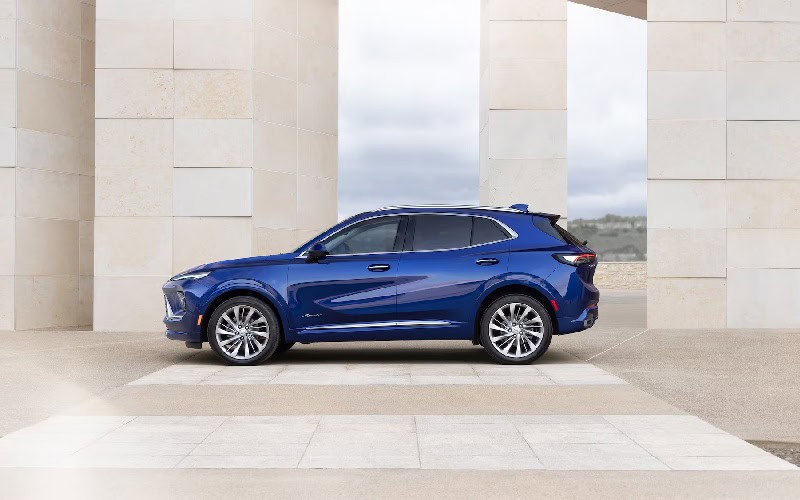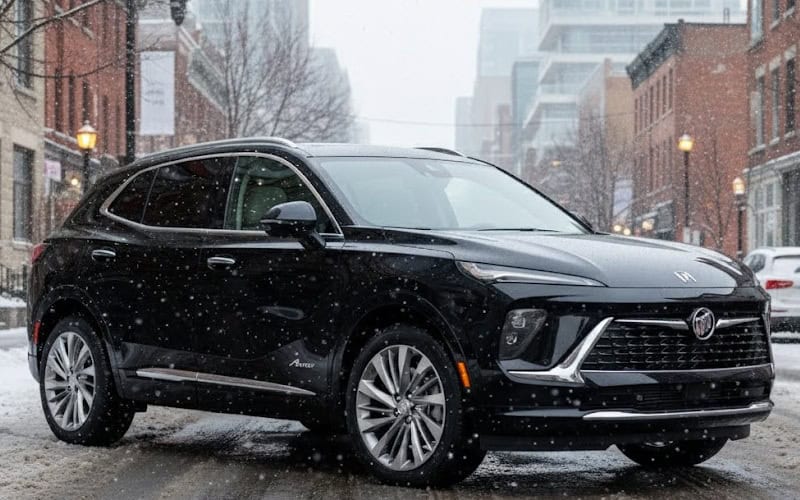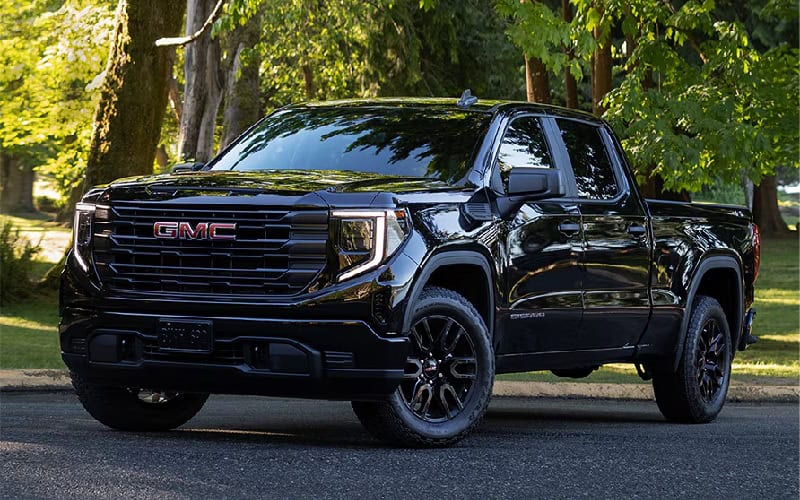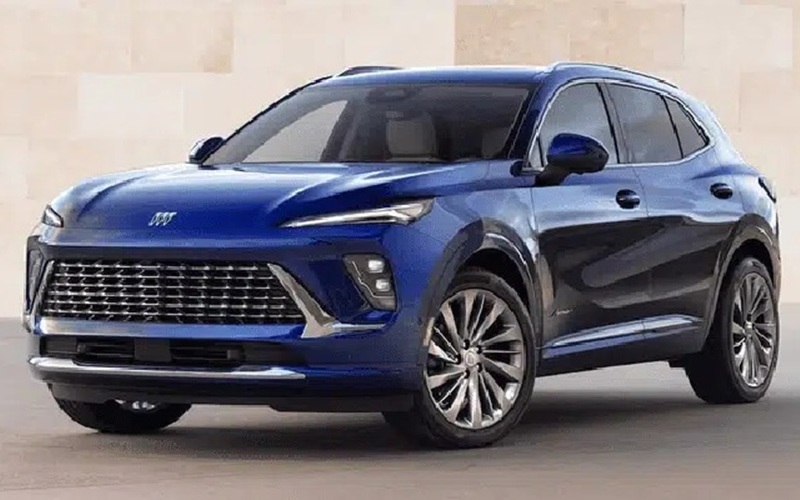Buick Envision: Coolant System Guide for Optimal Performance
The Buick Envision represents a perfect balance between luxury and performance, with a sophisticated cooling system that plays a crucial yet often overlooked role in maintaining this balance. This comprehensive system does far more than simply prevent overheating—it precisely regulates engine temperature to optimize performance, fuel efficiency, and emissions while ensuring longevity of critical components. […]
The Buick Envision represents a perfect balance between luxury and performance, with a sophisticated cooling system that plays a crucial yet often overlooked role in maintaining this balance. This comprehensive system does far more than simply prevent overheating—it precisely regulates engine temperature to optimize performance, fuel efficiency, and emissions while ensuring longevity of critical components.

Let’s take a closer look at what makes the Buick Envision cooling system unique, how it functions, and how proper maintenance can protect your investment. Understanding this complex system will help you recognize potential issues early and make informed decisions about maintenance and repairs.
Cooling System Architecture and Components
System Overview
The Buick Envision utilizes a pressurized liquid cooling system that circulates a precise mixture of coolant and water through the engine block, cylinder head, and various heat exchangers. This closed-loop system maintains optimal operating temperatures under all conditions, from frigid winter mornings to hot summer traffic jams.
What distinguishes the Envision cooling system is its intelligent design, which balances cooling efficiency with rapid warm-up capability—a critical factor for both emissions control and passenger comfort during cold-weather operation.
Primary Components
The cooling system consists of several key components working in harmony:
- Radiator: The primary heat exchanger, constructed from aluminum with multiple fins to maximize surface area. The Envision features a high-efficiency design with optimized airflow paths to enhance cooling capacity.
- Water Pump: Driven by the accessory belt, this component circulates coolant throughout the system. The Envision features a variable-flow water pump on newer models that adjusts coolant flow according to engine demands, thereby improving efficiency.
- Thermostat: Located at the engine outlet, this temperature-sensitive valve regulates the flow of coolant to maintain optimal engine temperature. The Envision uses an electronically controlled thermostat that can adjust its opening temperature based on engine load and operating conditions.
- Expansion Tank: This translucent reservoir accommodates the expansion and contraction of coolant while maintaining system pressure. It includes pressure and vacuum relief valves calibrated specifically for the Envision operating parameters.
- Cooling Fans: Electric fans mounted behind the radiator that activate as needed to pull air through the radiator. The Envision employs a dual-fan system with variable speed control for precise temperature management.
- Sensors and Control Module: Multiple temperature sensors throughout the system feed data to the engine control module, which manages fan operation, thermostat position, and even adjusts engine performance parameters based on coolant temperature.
- Heater Core: A small radiator-like component located under the dashboard that transfers heat from the coolant to the cabin air for passenger comfort.
Model-Specific Variations
The cooling system varies somewhat between different Envision models and engine options:
- 2.0L Turbocharged Models: These models feature additional cooling components, including a water-cooled charge air cooler, which requires a higher coolant capacity. The higher performance potential of these engines necessitates enhanced cooling capacity, with larger radiators and more powerful cooling fans.
- 2.5L Naturally Aspirated Models: These use a slightly simpler system with different coolant flow rates calibrated for the engine’s specific heat rejection characteristics.
- Post-2021 Redesigned Models: The second-generation Envision introduced further refinements, including enhanced thermal management strategies that improve cold-weather operation and reduce warm-up time.
Coolant Specifications and Selection
Recommended Coolant Type
The Buick Envision requires a specific coolant formulation to ensure proper protection of its aluminum engine components and specialized cooling system materials. The manufacturer specifies Dex-Cool long-life coolant (orange in colour) for all model years.
This ethylene glycol-based coolant uses Organic Acid Technology (OAT) with special corrosion inhibitors designed for extended service life. The formulation provides:
- Freeze protection down to approximately -37°C
- Boil-over protection up to 129°C under normal system pressure
- Corrosion protection for aluminum, cast iron, and various alloys used in the cooling system
- Compatibility with modern seals and gaskets
- Extended service intervals compared to conventional coolants
Mixing and Dilution
The coolant should be mixed with demineralized or distilled water at a 50/50 ratio for optimal performance. This mixture provides the ideal balance of freeze protection, heat transfer capability, and corrosion resistance.
Pre-mixed coolant is available and recommended to ensure proper concentration and water quality. Using tap water, particularly in areas with hard water, can introduce minerals that may cause scale buildup and reduce cooling efficiency over time.
Coolant Lifespan
The Dex-Cool formulation used in the Envision is designed for extended service intervals:
- Initial factory fill is rated for 5 years or 240,000 kilometers
- Subsequent refills typically maintain a 5-year service interval
- However, regular inspection of coolant condition is still recommended
It’s important to note that this extended lifespan assumes the cooling system remains sealed and uncontaminated. Any service that opens the cooling system or introduces conventional coolant will significantly reduce these intervals.
Maintenance Procedures and Intervals
Visual Inspection
Regular visual checks should be performed as part of routine maintenance:
- Level Check: With the engine cool, the coolant level in the transparent reservoir should be between the “MIN” and “MAX” marks. The level will rise as the engine warms and coolant expands.
- Condition Inspection: The coolant should maintain its original orange colour. Brown discoloration may indicate contamination or degradation. Cloudiness or floating particles indicate potential issues that require immediate attention.
- Leak Check: Examine the radiator, hoses, pump, and connections for signs of coolant leakage. White stains or crusty deposits often indicate previous leaks that have dried.
- Pressure Cap Inspection: The cap on the reservoir tank maintains system pressure. Damaged seals or springs can compromise system performance and should be addressed promptly.
Scheduled Service
The Buick Envision maintenance schedule specifies:
- Coolant Level Check: At every oil change interval (typically every 12,000 kilometers)
- Cooling System Inspection: Annual visual inspection of hoses, connections, and radiator condition
- Coolant Replacement: Every 5 years or 240,000 kilometers under normal conditions
- Pressure Testing: Recommended every 2 years to verify system integrity
Cooling System Flush Procedure
When the time comes for coolant replacement, a complete system flush is recommended:
- With the engine completely cool, carefully remove the pressure cap from the reservoir.
- Locate and open the radiator drain valve or remove the lower radiator hose.
- Collect the old coolant in appropriate containers for proper disposal.
- Close the drain and refill with a 50/50 mix of Dex-Cool and distilled water.
- Start the engine with the heater set to maximum to help remove air from the system.
- After the engine reaches operating temperature and the thermostat opens, top off the coolant as needed.
- Check for leaks and monitor the coolant level over the next few days as air continues to purge.
Common Issues
Temperature Management Concerns
Overheating:
- Potential causes include low coolant level, failed thermostat, inoperative cooling fans, restricted radiator, or water pump failure
- The dashboard will display a warning message and may limit engine power if critical temperatures are reached
- Pull over immediately if the temperature warning illuminates to prevent engine damage
Slow Warm-Up:
- Usually caused by a thermostat stuck open
- Results in poor heater performance and increased fuel consumption
- May trigger a check engine light due to the engine running outside optimal temperature range
Temperature Fluctuations:
- Often indicates air in the system or a failing thermostat
- Can also suggest a head gasket issue if accompanied by coolant loss
- The electronic thermostat may also cause fluctuations if its control system malfunctions
Coolant Loss and Leaks
Coolant loss can occur from various points:
External Leaks:
- Radiator seams or damaged fins
- Hose connections and clamps
- Water pump seal
- Heater core connections
- Freeze plugs in the engine block
Internal Leaks:
- Head gasket failure, allowing coolant into cylinders or oil
- Cracked cylinder head or block
- Internal transmission cooler failure (mixing coolant with transmission fluid)
Pressure-Related Issues:
- Defective pressure cap allowing coolant to escape through the overflow
- Combustion gas leakage into cooling system creating excessive pressure
Identification Tips
To diagnose cooling system issues in your Envision:
- Pressure Testing: A cooling system pressure tester can identify leaks that may not be visible during normal operation.
- Combustion Leak Testing: Chemical test kits can detect exhaust gases in the coolant, indicating a head gasket or internal engine problem.
- Temperature Monitoring: The onboard diagnostics can be accessed with an appropriate scan tool to monitor actual coolant temperatures and thermostat operation.
- Dye Testing: Fluorescent dye added to the cooling system can help locate external leaks that might be difficult to spot otherwise.
Seasonal Considerations
Cold Weather Operation
The Buick Envision cooling system faces unique challenges in cold weather:
- Freeze Protection: The 50/50 coolant mixture provides protection to approximately -37°C, but should be verified before winter with a coolant tester.
- Heater Performance: Poor heat output often indicates low coolant level, air in the system, or a restricted heater core.
- Cold-Start Strategy: The Envision uses a sophisticated warm-up strategy that temporarily restricts coolant flow to the radiator, allowing faster engine warm-up and reducing emissions during cold starts.
- Thermostat Function: The electronically controlled thermostat is particularly important in cold weather, as it adjusts based on driving conditions to maintain optimal temperature.
Hot Weather Considerations
During summer conditions:
- Cooling Fan Operation: The variable-speed electric fans should activate at appropriate temperatures. Listen for fan operation when the vehicle is idling after reaching normal operating temperature.
- A/C Impact: The air conditioning places additional load on the cooling system. Ensure the A/C condenser in front of the radiator is clean and unobstructed.
- Driving Patterns: Short trips with frequent stops create more heat stress than highway driving. Monitor temperature gauges more carefully in stop-and-go summer traffic.
- Radiator Airflow: Keep the radiator and condenser free of debris, insects, and other obstructions that can reduce airflow and cooling efficiency.
Advanced Features and Technology
Intelligent Thermal Management
The Buick Envision, particularly in models from 2018 onward, incorporates advanced thermal management strategies:
- Variable Flow Water Pump: Rather than pumping at a constant rate tied to engine speed, this electronically controlled pump adjusts flow based on actual cooling needs, improving efficiency.
- Active Grille Shutters: These aerodynamic elements close during cold operation or high-speed driving to reduce drag and speed engine warm-up, opening only when additional cooling is required.
- Multi-Zone Cooling: Different engine components are maintained at different optimal temperatures, with separate cooling circuits for the cylinder head, block, and, in turbocharged models, the charge air cooler.
- Integration with Engine Management: The cooling system works in concert with the engine control module to adjust ignition timing, fuel delivery, and other parameters based on temperature conditions.
Hybrid Cooling Technologies
The latest Envision models employ cooling technologies borrowed from hybrid vehicle development:
- Electric Auxiliary Water Pump: This maintains coolant circulation even when the engine is shut off during auto stop-start operation, ensuring consistent heat for the cabin and proper cooling for turbocharger bearings.
- Heat Recovery Systems: These capture waste heat more effectively during warm-up, reducing the time required to reach optimal operating temperature.
Buick Envision: Protection Through Knowledge
The sophisticated cooling system represents a critical component of its engineering excellence, striking a balance between performance, efficiency, and longevity. By understanding how this system functions and maintaining it according to manufacturer specifications, owners can protect their investment and ensure trouble-free operation for years to come.
Regular inspection and maintenance—checking coolant level, condition, and concentration—provide early warning of potential issues before they become costly repairs. Using only the specified Dex-Cool coolant and following proper service procedures will preserve the integrity of all cooling system components.
Remember that the cooling system affects virtually every aspect of your performance, from fuel economy and emissions to passenger comfort and engine longevity. Giving it the attention it deserves will pay dividends in your ownership experience.
Questions and Answers About the Buick Envision
Why does the Buick Envision use a split cooling system design?
- This luxury SUV employs a split cooling system that features separate coolant circuits for the cylinder head and engine block, allowing for more precise temperature management across different engine components and enabling faster warm-up times while reducing overall emissions during cold starts.
What unique feature helps the Envision maintain optimal coolant temperature in extreme cold?
- It incorporates an intelligent thermal management module with an electronically controlled thermostat that can maintain different temperature thresholds based on driving conditions. This allows the coolant to be kept at higher temperatures during short trips in cold weather, ensuring proper engine function and cabin heating.
How does the Envision prevent coolant loss during thermal expansion?
- The pressurized reservoir system operates at approximately 110 kPa (16 psi) and incorporates a dual-pressure relief valve that manages both positive and negative pressure situations, allowing the system to accommodate thermal expansion while preventing coolant loss and air infiltration.
What distinguishes the coolant used in the Buick Envision from conventional antifreeze?
- It requires Dex-Cool long-life coolant with special silicate-free, organic acid technology (OAT) formulation that protects aluminum components from corrosion for up to 5 years or 240,000 kilometers, while also containing specific additives that prevent electrolysis damage in the engine’s mixed-metal environment.
Which cooling system component is unique to the turbocharged Envision models?
- Turbocharged engines feature an auxiliary water-cooled charge air cooler integrated into the intake manifold, which uses engine coolant to reduce the temperature of compressed air before it enters the combustion chamber, improving performance while requiring additional coolant capacity compared to naturally aspirated models.
*Disclaimer: Content contained in this post is for informational purposes only and may include features and options from US or international models. Please contact the dealership for more information or to confirm vehicle, feature availability.*


